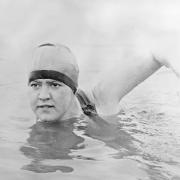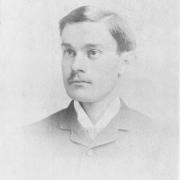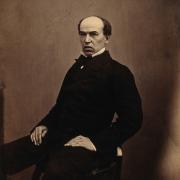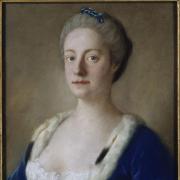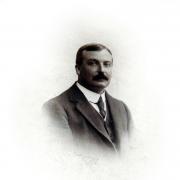How the extraordinary vision of a German called Charles Gunther living in Hawkhurst led to the creation of a kitchen staple we all take for granted – OXO
More than 150 years before snail porridge and nitrogen-chilled egg and bacon ice-cream, when Gordon, Jamie and Heston were mere glints in their great, great grandparents’ eyes, in the majestic surrounds of the Tongswood Estate in Hawkhurst, a gentleman with a much lower profile was cooking up something that many of us still use in our everyday cooking.The story starts in the 1840’s – the ‘hungry forties’, when chemist Justus von Liebig determined to bring the goodness of beef to everyone. This product was to become one of the most recognised and well-loved brands in the UK – OXO.George Giebert, an engineer based in the town of Fray Bentos, Uruguay, had worked with Justus to create Liebig’s Extract of Meat, the forerunner of Oxo. By 1862, the company had become a major force. Liebig’s extract was extolled in The Lancet, championed by Florence Nightingale and the second Duke of Wellington; it even accompanied Stanley on his historic 1865 expedition to find Dr Livingstone.In England, there was a man ready to cope with the next stage of the company’s growth. Charles Gunther had worked at Liebig’s for just five years when, at the age of 25, he was made a director of the company. By 1895, aged 32, he was chairman and had bought an additional 80,000 acres of land in Argentina and put up a new factory, before expanding into Paraguay and later Rhodesia. It was Gunther’s vision that allowed OXO to meet its competition head on and succeed. Determined to launch an affordable, superior alternative, after two years, OXO in its original liquid form was born and Gunther embarked on an aggressive marketing strategy. OXO distributed leaflets through its trade outlets, gifts were exchanged for labels from OXO bottles and advertising was carried out on an enormous scale. In 1902, the company decided to employ female labour – virtually unheard of at the time. But for the sake of decorum, the ladies were located in a separate department with a different entrance to the men.In the same year, Gunther bought the Tongswood Estate in Hawkhurst (now the home of St Ronan’s School) and used the land to breed pedigree cattle which were shipped to Argentina to improve the quality of the beef. Gunther’s altruistic side proved a boon to the pre-dole local economy in Hawkhurst. Appalled by the sight of men standing idle under the iconic colonnade in the village, he employed an army of gardeners, maintenance staff, farm hands and foresters who kept the estate in immaculate order. The brickwork of the imposing Tongswood mansion has an unusual design – the letters O X O are clearly depicted above the entrance in darker brick, which gives rise to speculation over how OXO came to be named. The OXO trademark was registered worldwide in 1899 (1900 in the UK) and it is believed that like many products at the time, the letter ‘O’ was added to the main component, ie Ox. Romantics wonder if Gunther had seen the house before naming the company, or perhaps seeing the name emblazoned on the house sealed the sale?Gunther began planning what was to be possibly the biggest leap in the OXO success story. Fluid OXO was a huge success, but Gunther wanted to achieve Liebig’s original aim of a high-quality product available to everyone that he could sell for a penny!He hired an eminent chemist and gave him absolute control to pursue a penny product. This was not easily achieved; fluid OXO in a gelatine capsule proved too expensive to manufacture and OXO in a tablet form deteriorated with keeping. The secret of just how it was produced must remain just that, but beef extract and beef fibrin were fed into a Swiss cube-making machine and finally in 1910, the OXO cube had evolved.The penny cube was an immediate success, but then came August 1914; war and the German occupation of Belgium, which caused consternation for Liebig and Gunther, as both were of German extraction. To quell anti-German feeling, Liebig’s became OXO Ltd in England, Gunther stepped down as director and Lord Hawke, chairman of the MCC, one of the great cricketers of his day, was appointed chairman, so adding British aristocratic associations, physical prowess and athletic achievement to cement OXO’s reputation as a symbol of all that was best in British life.Throughout the First World War, OXO supplied 100 million OXO cubes and 200 million tins of Fray Bentos corned beef to the Services.After 1918, OXO became one of the pioneers of massive marketing and there was no escaping its impact, first with the theme of ‘OXO – the Mighty Atom’, later with punning catchphrases (‘Willie B. Hardy? Yes, if he takes OXO) – a style that has since been much copied and parodied. In 1923 Christmas stockings were offered in exchange for 120 cube wrappers: 50,000 were claimed. Other give-aways included dolls, cricket bats and footballs. Eventually the response to an offer for free insurance caused such an administrative nightmare that the scheme had to be abandoned.Gunther was made High Sheriff of Kent in 1921 and the iconic OXO Tower on the south bank of the Thames was bought toward the end of that decade. Originally constructed as a power station for the post office, it was largely rebuilt to an Art Deco design by company architect Albert Moore between 1928 and 1929. The original design incorporated large illuminated signs to advertise the company’s products. Permission for the signs was refused, so instead the tower was built with vertically aligned windows in the shape of a circle, a cross and a circle – or OXO!Charles Gunther died of a heart attack in 1931, aged 68, while lunching at Paper Mill House in Benenden. His second wife Helen continued to work tirelessly in Hawkhurst, responding to every charitable cause and in attendance behind a stall at local f�tes and bazaars until her death in 1961.OXO continued to grow after Gunther’s death, eventually becoming part of the fabric of English life. Always innovative with its advertising, it now exploited the latest available medium – TV. In the 1950s, even Sooty was cooking with OXO.The ‘Katie’ series was launched in 1958, with actress Mary Holland playing wife Katie to husband Philip and declaring: “OXO gives a meal man appeal.” The message of OXO helping busy mums was further enhanced in 1983 when Lynda Bellingham and Michael Redfern were introduced as the new OXO family. At the end of 2009, OXO reshaped the cubes into an ‘X’ shape to aid crumbling and ran a competition to find a new OXO family, this time a real family reflecting modern times. Many great men and women made Victorian Britain a world leader. And in Hawkhurst, a man with vision, drive and passion left a legacy many would argue is just as important.
What’s on24 and 25 July Beefing it UpA celebration of the centenary of the creation of the OXO cube will be held in Hawkhurst.
Saturday 24 July:Richard Phillips, Kent celebrity chef at Chapel Down, Thackerays, Hengist and star of TV programmes such as Ready, Steady, Cook, will give a culinary demonstration followed by a gala dinner with local wine tastings at St. Ronan’s (ticketed event). Farm safari: four local farms (dairy, beef, fruit and a vineyard) open to visitors. A special OXO memorabilia exhibition at St. Ronan’s School provided by Robert Opie Museum of Brands. All-day refreshments, light meals and cream teas in the gardens of the St. Ronan’s Estate provided by Holroyd Howe. Picnic preparation demonstrations during the day provided by Holroyd Howe Sunday 25 JulyLocal Food Producers’ Market on The Moor. Featuring local producers, healthy eating guidance provided by the local Primary Care Trust, entertainment, including archery, cookery demonstrations from local eateries



